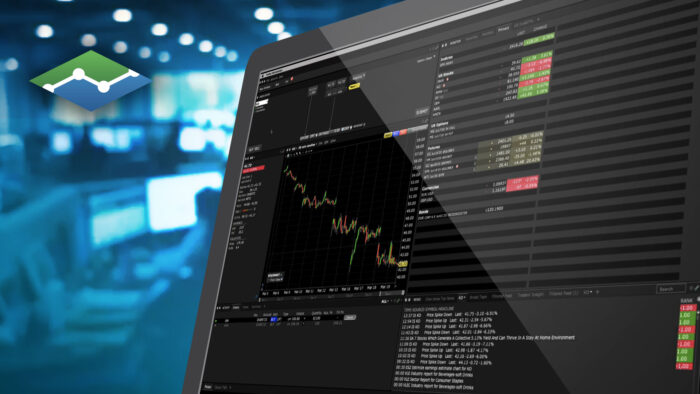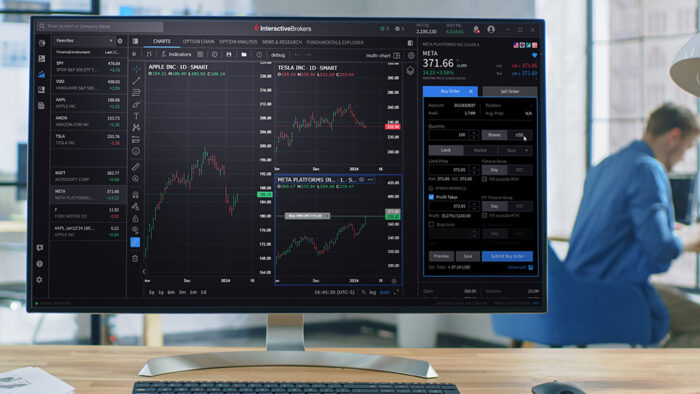AT A GLANCE
- A record wildfire season in 2023 is still revealing its effects on the market, one factor driving hedging in lumber futures
- Interest in the CME Group Lumber contract launched in 2022 soared to a record 10,000 in open interest amid increasing uncertainty over supply and demand
Volatility in lumber prices has come off record highs the market experienced during the coronavirus pandemic, but questions around supply and demand still remain. Housing demand suffered from increased interest rates and skyrocketing construction costs, while supply fell off in traditional production regions due to climate issues like wildfires.
Given that consumer demand has started to see some modest growth while supply remained somewhat depressed, lumber prices have ticked slightly higher in 2024 than the lows experienced through periods of 2023.
Among this continued uncertainty, saw mills, logging companies, retail lumber yards and others with exposure to physical lumber prices have had the ability to manage their risk with Lumber futures.
The redesigned CME Group Lumber contract, launched in 2022, draws from broader areas of supply and centralizes pricing at one source, while also allowing for more flexibility with a smaller contract size. The Lumber contract recently hit a record 10,000 contracts in open interest – the number of trades not yet settled – and reached a trading volume record of 3,298 on April 22 on the heels of lower-than-expected March housing starts.
We spoke with three lumber market participants, who share their experience with managing uncertainty and their outlook on the broader lumber market.
What do you see as the biggest risk facing the lumber market in 2024?
STINSON DEAN, OWNER, DEACON LUMBER COMPANY
I think the idle capacity at the sawmills is laying in wait. Much more strength in prices and we’ll see the mills increase production to capture higher numbers.
JOHN BRADY, FUTURES PROGRAM MANAGER, LMC
The biggest risk is the divergence of the different species. There are many challenges facing the SPF (spruce, pine and fir) markets in 2024. Over the last six years, European spruce imports had helped to change the quality and availability landscape. We are expecting less European product coming into the states this year. Last summer was the worst forest fire season in my career. The industry will not see the true effect of these fires until later this year.
MICHAEL ALMOND, GENERAL MANAGER, SPF SALES, CANFOR
Supply constraints appear to be the prominent risk in 2024 for the North American lumber market. In Canada, recent events have limited the availability of wood fiber and impacted mill production, in the short and long term. Moreover, the record wildfire season in 2023 in Canada has yielded a short term, widespread salvage effort, with further adjustments forthcoming to future harvest levels.
Why do you think lumber futures are continuing to grow in popularity?
STINSON DEAN
The recent volatility in the seasonal spring rally has brought in great opportunities to hedge. And then for speculators, the improvement in interest rates at the end of 2023 had given reason to be long on the view of improving housing starts for the first half of 2024.
JOHN BRADY
The market volatility, starting in 2018, created a lot of angst across the lumber industry. We had become accustomed to a lumber market that changed very little month to month, year to year. The industry finally has a little bit of fear. Fear is healthy, especially for the growth of hedging. The legacy futures contract had become prohibitive to many of those that wished to participate in the market. The lumber market is often resistant to change, but the enhancements to the futures product were necessary.
MICHAEL ALMOND
The increasing participation in the CME Group Lumber contract is very encouraging. The key changes in the ‘new’ contract with smaller truckload volumes, expanded species and Chicago delivery, have created a more inclusive trading platform for lumber risk management. More generally, resiliency in housing demand amid a higher interest rate environment, has renewed interest and optimism in the lumber market.
“We needed a contract that was more representative of the lumber market at large.”
— JOHN BRADY
Why do you think hedging your lumber exposure through the futures market is important?
STINSON DEAN
Lumber is one of the most volatile commodities out there. The Lumber futures contract allows me to be nimble in hedging and lifting hedges on a truck-by-truck basis so I can capture every dollar of gains possible.
JOHN BRADY
Lumber buyers and sellers are the most risk tolerant group of commodity traders. This is our culture; it will take many more years of volatility to create wholesale change. However, the business landscape is changing so rapidly that retailers and other lumber consumers need to grasp at every opportunity to be unique and have an edge. Producer consolidation is ramping up and will likely not stop.
Retailer consolidation is a constant, especially with private equity money building larger company portfolios. The Lumber futures contract is an opportunity to be unique, to set yourself apart from your competition. Pennies and single points of margin matter more now than ever and will be exponentially important in years to come.
MICHAEL ALMOND
We experienced some extreme volatility during the pandemic years and lumber risk management was a critical function. The Lumber futures contract offers the ability to forward hedge in a longer window against the physical cash market, and the ability to transfer hedges by EFP (exchange of futures for physical) into real order file.
Are there any ways in which the smaller size and delivery location of LBR have advantaged your business?
STINSON DEAN
The ability to take hedges on and off in the same manner I sell most of my lumber, via truck, has made it easier to service smaller customers that only buy one truck while also have the liquidity to lift four contracts (four truckloads worth) at a time for bigger transactions.
JOHN BRADY
LMC represents members across every aspect of the home building industry in the United States. Our over 400 members, with 1,800 locations, are quite diverse in terms of size, scope and demographic. As such, we needed a contract that was more representative of the lumber market at large. For us, it is not about SPF, it is about the flexibility that a truckload sized contract brings to a hedging program. The price in Chicago was daunting at first, but our years of data has helped our members see through the additional freight factor.
—
Originally Posted April 23, 2024 – Behind the Renewed Interest in Lumber Markets
Disclosure: Interactive Brokers
Information posted on IBKR Campus that is provided by third-parties does NOT constitute a recommendation that you should contract for the services of that third party. Third-party participants who contribute to IBKR Campus are independent of Interactive Brokers and Interactive Brokers does not make any representations or warranties concerning the services offered, their past or future performance, or the accuracy of the information provided by the third party. Past performance is no guarantee of future results.
This material is from CME Group and is being posted with its permission. The views expressed in this material are solely those of the author and/or CME Group and Interactive Brokers is not endorsing or recommending any investment or trading discussed in the material. This material is not and should not be construed as an offer to buy or sell any security. It should not be construed as research or investment advice or a recommendation to buy, sell or hold any security or commodity. This material does not and is not intended to take into account the particular financial conditions, investment objectives or requirements of individual customers. Before acting on this material, you should consider whether it is suitable for your particular circumstances and, as necessary, seek professional advice.
Disclosure: Futures Trading
Futures are not suitable for all investors. The amount you may lose may be greater than your initial investment. Before trading futures, please read the CFTC Risk Disclosure. A copy and additional information are available at the Warnings and Disclosures section of your local Interactive Brokers website.












